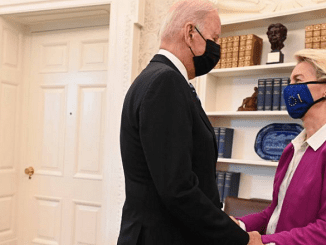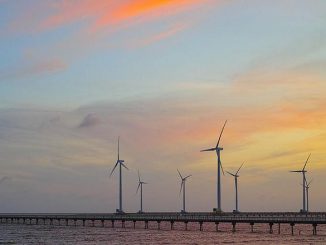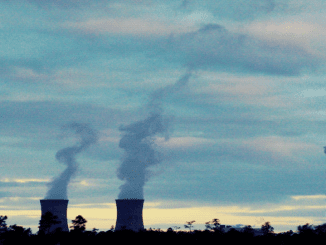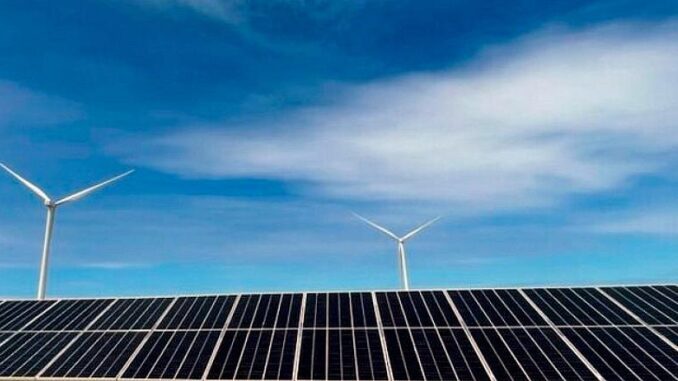
SALEM, Oregon, October 10, 2025 (ENS) – Oregon Governor Tina Kotek this week signed an Executive Order accelerating renewables project development in the state before time runs out on federal clean energy tax credits. Tax credits now on the table that are set to expire on July 4, 2026 can fund between 30 and 50 percent of most solar and wind projects, the governor said.
Kotek signed the order Monday directing state agencies and commissions to take “any and all steps” allowed by law to hurry renewable energy permitting, to the point of adopting temporary emergency rules and outsourcing assessments to third-party contractors.
Solar and wind companies face a strict July 4, 2026 deadline to start construction and qualify for the Investment Tax Credit and the Production Tax Credit set by President Donald Trump’s domestic policy law.
Recent guidance has narrowed qualification requirements and required project completion within four years for companies to qualify for the full federal incentive. Projects that fail to meet the July 4 construction deadline must enter into service by December 31, 2027 to qualify for federal tax credits.

“With the elimination of promised incentives by the Trump Administration, states must step up as the last line of defense against climate catastrophe. We have to get renewable energy infrastructure built, and quickly,” said Governor Kotek, a Democrat.
“We cannot afford to lose this critical window; every wind and solar project we help complete now directly fights the irreversible climate damage we’re racing to prevent,” she declared.
These federal tax credits make clean energy projects more affordable, accelerating Oregon’s transition away from fossil fuels.
“Without expedited permitting, shovel-ready solar and wind projects may miss the July deadline, potentially losing millions in federal funding that would otherwise reduce electricity costs and advance our climate goals,” Governor Kotek said in her order.
The Oregon Department of Energy and the Energy Facility Siting Council are ordered to “identify projects that must begin construction by July 4, 2026 and subsequent process changes that would be of greatest assistance to meeting the deadline for federal tax credits,” the governor’s order states.
The order gives the highest priority “to projects that have secured power purchase and interconnection agreements and can demonstrate the project will provide benefits to Oregon ratepayers.”
The Oregon Public Utility Commission is ordered to accelerate utility Request for Proposal, RFP, timelines and procurement of clean energy resources.
In her order, the governor said, “When someone wants to build a solar farm or wind farm, they need to study how it will connect to the existing electrical grid. This is called an ‘interconnection study.’ Staff will suggest that the Commission consider using outside contractors to study how solar and wind power projects connect to the electrical grid.”
The Oregon Department of Energy lists 14 wind and solar projects that have at least submitted Notices of Intent to build.
For example, Summit Ridge Renewable Energy Facility is a proposed wind and solar photovoltaic energy generation facility including battery storage and related and supporting facilities to be located within a 4,061-acre (6.35 square mile) site boundary of private land zoned for exclusive farm use in northeastern Wasco County 17 miles southeast of The Dalles, and eightmiles east of the town of Dufur, Oregon.
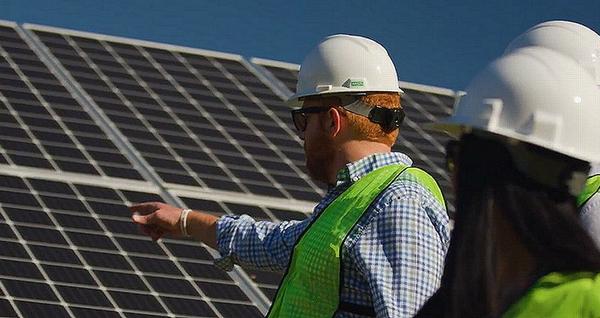
The Summit Ridge project includes 32 wind turbines and up to 178,507 solar modules on racking systems and posts – with a combined wind and solar generating capacity of 261 megawatts – enough to power 260,000 average homes in the United States, according to federal government data.
Oregon’s per capita energy use in the residential sector is the third lowest in the nation.
Hydroelectric power typically provides more than half of Oregon’s in-state total electricity net generation, but abnormally dry weather and drought in recent years has limited hydroelectric power to less than 50 percent of Oregon’s in-state electricity since 2022. In 2024, hydropower accounted for about 41 percent of Oregon’s total electricity generation.
Natural gas fuels the second-largest share of Oregon’s electricity generation. In 2024, natural gas-fired power plants provided 38 percent of the state’s total net generation.
Nonhydroelectric renewable resources – wind, solar, biomass, and geothermal power – provide almost all the rest of Oregon’s total generation, 21 percent in 2024.
A decade ago, coal fueled five percent of Oregon’s in-state net generation, but Oregon’s last coal-fired power plant closed in 2020. There are no commercial nuclear power plants in the state.
Renewables in Oregon
In 2024, renewable energy resources, led by hydroelectric power, accounted for about 62 percent of Oregon’s total in-state electricity net generation. Electricity generation from nonhydroelectric renewable sources has increased by almost 50 percent since 2014, state data shows.
In 2024, wind power accounted for 15 percent of Oregon’s total in-state electricity generation. By the end of 2024, Oregon had almost 4,000 megawatts of wind capacity.
A 200-megawatt wind farm, which will be part of Portland General Electric’s larger Wheatridge Renewable Energy Facility, is in development and is scheduled to come online by mid-2025.
In 2024, solar energy, small-scale and utility-scale combined, supplied four percent of Oregon’s total electricity generation. The state’s first utility-scale solar photovoltaic facilities came online in late 2011.
Utility-scale solar generated almost four-fifths of the state’s solar power in 2024. Numerous additional larger solar PV projects are in development, and 216 megawatts of additional solar PV capacity is scheduled to come online in 2025, says the U.S. Energy Information Administration.
Governor Kotek explains in her Executive Order that “…demand for clean electricity is rising rapidly across the region, and development of solar and wind energy facilities in Oregon aligns with the state’s
goals and values by producing clean and affordable electricity, supporting jobs and economic growth, generating property tax revenue for local communities, and advancing progress towards Oregon’s clean energy and climate goals…”
In 2025, Oregon’s goals are implementing its Climate Protection Program, CPP, and the new Oregon Energy Strategy, with a new deadline to submit a Comprehensive Climate Action Plan, CCAP, in December 2025.
The Climate Protection Program sets declining limits on fossil fuel emissions, aiming for a 50 percent reduction by 2035 and 90 percent by 2050, while the Comprehensive Climate Action Plan will identify opportunities to reach these goals and address gaps in existing efforts.
In addition, the Oregon Legislature, in which Democrats hold the majority, is addressing barriers to clean energy and resilience, exploring new energy technologies like super-hot rocks geothermal, and advancing zero-emission vehicle goals.
“Oregonians are already feeling the strain of rising energy costs and worsening climate impacts, yet Congress and the Trump administration have launched an all-out assault on affordable clean energy and our safe climate future,” Nora Apter, Oregon director for the nonprofit organization Climate Solutions, said.
“By moving swiftly to get as many wind and solar projects across the finish line as possible before the loss of federal tax credits, Governor Kotek is defending Oregon families, family-wage jobs, and energy resilience against these senseless attacks,” Apter said.
“Today’s action will help ensure that renewable energy projects can capture critical federal incentives before they disappear – keeping Oregon competitive and able to power our state’s growing energy demands with clean, affordable electricity,” she said.
See the full text of Governor Kotek’s Executive Order here.
Featured image: The Wheatridge Renewable Energy Facility, a hybrid renewable energy plant in Lexington, Oregon, combines solar power, wind power and gigantic batteries to store the energy generated there. It was the first utility-scale plant of its kind in North America when it came online May 24, 2022 (Photo courtesy Portland General Electric)

